#japansummer
Explore tagged Tumblr posts
Text
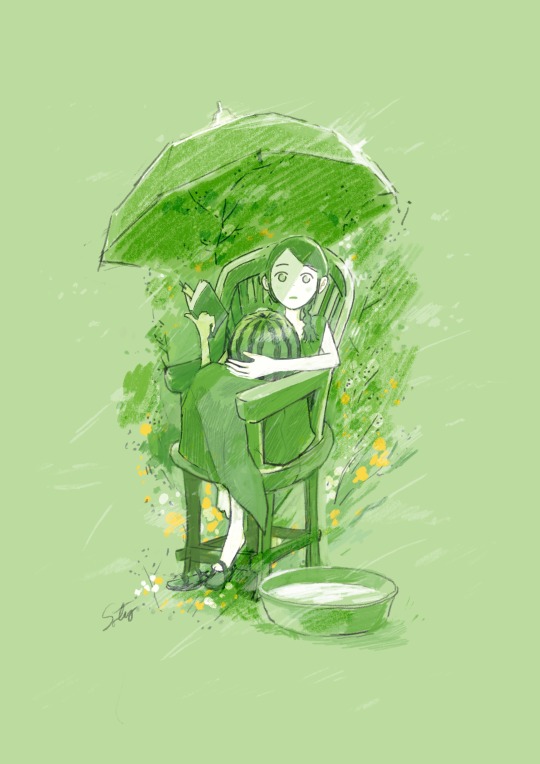
2023.08.25
52 notes
·
View notes
Text
What I Wish I Knew Before Coming to Japan! #1

The Humidity is Real – Pack Summer-Friendly Clothes
When I was packing for Japan, I only considered the temperature. Big mistake! The humidity here makes the air feel much hotter and stickier than what the temperature suggests. Even if you check the forecast and think, "Oh, it's only 80°F," the humidity can turn that into a whole different beast. My advice: prioritize lightweight, breathable clothing, even if you see the locals covering up.
Interestingly, many locals do wear long sleeves despite the heat, but this can be misleading for visitors. The reasons range from being used to the climate to adhering to work dress codes or protecting their skin from the sun. I even saw a woman on a bike dressed in a long maxi dress, with arm-length gloves, a large sun hat, and sunglasses—she reminded me of Marceline from Adventure Time! But as a visitor, trying to copy what the locals wear isn’t always the best idea. Instead, make sure to check both the temperature and humidity before heading out.
Humidity really amplifies the heat. For instance, if it’s 100°F and the humidity is 55%, it can feel like a scorching 124°F! However, at 70°F with the same humidity, it still feels like 70°F. This means humidity mainly impacts higher temperatures, making the heat index rise significantly.
Luckily, Japan has your back with portable fans sold everywhere. You’ll see people using them on crowded trains, especially when it’s packed and stuffy! So, don’t hesitate to grab one to help cool down.
Bottom line: dress for the humidity, and don’t be fooled by what others are wearing!
#Here are some relevant hashtags you can use for your blog post:#JapanTravelTips#TravelAdvice#HumidityHacks#SummerInJapan#PackingForJapan#JapanWeather#StayCoolInJapan#JapanVacation#TravelSmart#WhatToWearInJapan#JapanTravelGuide#JapanLife#TravelPreparation#JapanSummer#TravelBlogger#ExploreJapan#TravelEssentials#VisitJapan
1 note
·
View note
Photo
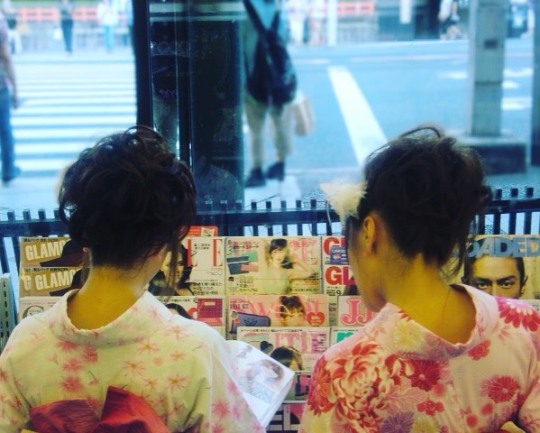
Today's not exactly Cosplay (few tags under that guise) #浴衣女子 #japansummer #浴衣 #kawaiigirl #popculture #コスプレ #japanculture #kawaiidesu #cosplaying #yukatagirl #yukata #cosplayers #kawaiigirls #japaneseculture #kawaii #cosplayer #japanphoto #cosplays #japanphotography #kawaii #cosplaygirls #cosplay #cosplaygirl #kawaiistyle #コスプレイヤー #osakaroolz #kawaiii #kimonostyle #kimonogirl #kimonofashion https://www.instagram.com/p/CSSryKnhDof/?utm_medium=tumblr
#浴衣女子#japansummer#浴衣#kawaiigirl#popculture#コスプレ#japanculture#kawaiidesu#cosplaying#yukatagirl#yukata#cosplayers#kawaiigirls#japaneseculture#kawaii#cosplayer#japanphoto#cosplays#japanphotography#cosplaygirls#cosplay#cosplaygirl#kawaiistyle#コスプレイヤー#osakaroolz#kawaiii#kimonostyle#kimonogirl#kimonofashion
2 notes
·
View notes
Photo

こんにちは〜\(◕ω◕)/♥ Have you ever seen Japanese wind chimes? They are called 風鈴 (fuurin) and they are hung outside of houses and buildings in the summer. When the wind blows, they make a beautiful, soothing chiming sound that will make you feel very relaxed and cool! (◕ω<)♪ According to traditional Japanese thought, 風鈴 (fuurin) also have the ability to ward off evil spirits. \(◕ω◕)/☆ Learn more at my blog : https://www.punipunijapan.com/japanese-windchimes-furin/ Do you have any Japanese questions? Take Japanese lessons online with our professional Japanese teachers \(◕ω◕)/☆ We can teach you Japanese step by step and make the customized lesson for you. You can take a FREE trial lesson here🌸👉 http://kakehashijapan.com °☆.。.:*・°☆.。.:*・°☆ °☆.。.:*・°☆.。.:*・ Do you want to pass JLPT? Do you want to ask many Japanese questions?🤓 Join our JLPT prep course from here✏️ You can join us FREE first month ➡️ https://www.punipunijapan.com/jlpt/ °☆.。.:*・°☆.。.:*・°☆ °☆.。.:*・°☆.。.:*・°☆ Learn easy and useful Japanese phrases📚 Come to this link and get our phrase book! You can learn over 700 Japanese phrases and start speaking Japanese today♪ (◕ω◕) PUNIPUNI JAPANESE PHRASEBOOK: http://www.punipunijapan.com/phrasebook/ ☆.。.:*・°☆.。.:*・°☆.。.:*・°☆.。.:*・°☆.。 #learnjapaneselanguage #studyingjapanese #Japanesevocabulary #nihongo #learnjapanese #studyjapanese #japanesebeginner #Japanese #Japan #japansummer #learningjapanese #japanesewords #Japaneselearner #japanese #Japan #japaneselanguage #japaneselessons #japaneselesson #learnjapanese #japaneseteacher #Japaneseculture #japaneseclass #japanesephrases #JLPT #japaneselanguage #learningjapanese #日本語 #日本語勉強中 #日本語勉強 #🇯🇵 #Japan #日本 #furin #windchimes #windchime https://www.instagram.com/p/CD7y3hhH2Ii/?igshid=1e6bg2mk2wq0c
#learnjapaneselanguage#studyingjapanese#japanesevocabulary#nihongo#learnjapanese#studyjapanese#japanesebeginner#japanese#japan#japansummer#learningjapanese#japanesewords#japaneselearner#japaneselanguage#japaneselessons#japaneselesson#japaneseteacher#japaneseculture#japaneseclass#japanesephrases#jlpt#日本語#日本語勉強中#日本語勉強#🇯🇵#日本#furin#windchimes#windchime
9 notes
·
View notes
Photo




By My Side
Canon EOS 5D MarkIV [EF70-200mm F2.8L IS II USM]
89 notes
·
View notes
Photo
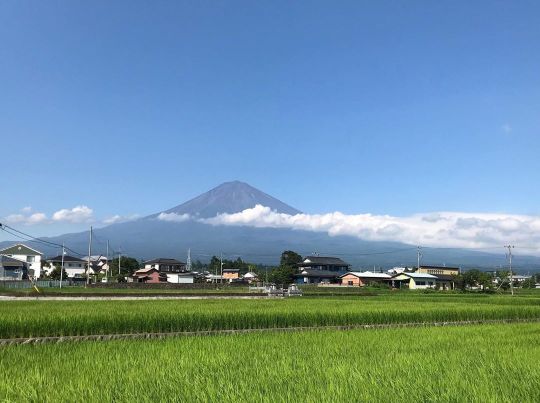
Summer Mt. Fuji #mountfuji #富士山 #mtfujijapan #fujiyama #local_japagram #田舎暮らし #田舎の風景 #田んぼ #japansummer #japantravel #ruraljapan https://www.instagram.com/p/CDG401BnmHd/?igshid=dcxu4ttu2e8w
#mountfuji#富士山#mtfujijapan#fujiyama#local_japagram#田舎暮らし#田舎の風景#田んぼ#japansummer#japantravel#ruraljapan
1 note
·
View note
Text
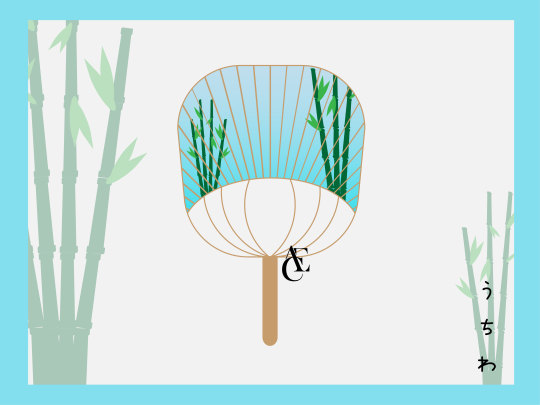
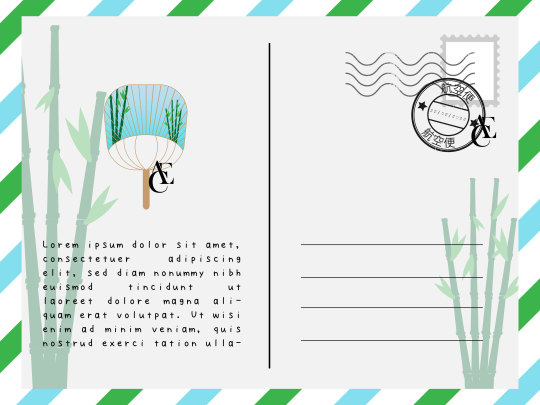
JAPANESE THEMED POSTCARD - Summer Collection Uchiwa//traditional Japanese fixed fan✨✨
#japansummer#summer#summertime#uchiwa#japanfan#illustration#illustrator#art#artwork#design#desain#desaingrafisindonesia#desaingrafis#graphicdesign#vectorart#vector#vectorillustration#vectors
1 note
·
View note
Photo

Voley Beach 💦😅 . After so long time I get so sweat playing Voleiball at the beach , I had a lot of fun and was so incredible experience get in to the sea after the game ….💪🏻😄 . . #summertime #lsealover #beachvolleyball #summersports #beachvibes #sun #besch #japan #japansummer #summertime #hiroshima #広島カメラマン #広島フォトグラファー #livinginjapan #beachsport #funday #sundayfunday (en かるが浜海浜公園) https://www.instagram.com/p/CiFbao8haMe/?igshid=NGJjMDIxMWI=
#summertime#lsealover#beachvolleyball#summersports#beachvibes#sun#besch#japan#japansummer#hiroshima#広島カメラマン#広島フォトグラファー#livinginjapan#beachsport#funday#sundayfunday
0 notes
Photo

Pohon laut dan kalian #japan #海 #summer #summertime #japansummer #bw #bwphotography #bw_lover #bw_photooftheday #streetphotography #blackandwhite #blackandwhitephotography #infrared #infraredphotography #infraredworld #fullspectrum #mie #suzuka #suzukamotodaisuki #myjan_wiapr #reframe2 (di Marina Beach) https://www.instagram.com/p/Ce8TQi1vK09/?igshid=NGJjMDIxMWI=
#japan#海#summer#summertime#japansummer#bw#bwphotography#bw_lover#bw_photooftheday#streetphotography#blackandwhite#blackandwhitephotography#infrared#infraredphotography#infraredworld#fullspectrum#mie#suzuka#suzukamotodaisuki#myjan_wiapr#reframe2
0 notes
Link
¿Qúe es eso que hubo en el verano japonés de los 80s y 90s?
1 note
·
View note
Video
#japantrip #japantravel #miyazu #japansummer #takoyaki #foodtrip #foodporn 🦑🦑🦑 (at Miyazu, Kyoto)
1 note
·
View note
Photo

A day of happy sunny summer ☀️ 束の間の暑い夏の日。青空を見ると嬉しくなりますね。 @visitkagoshimajp #夏休み #海水浴 #鹿児島 #唐浜 #薩摩川内市 #九州 #日本 #海岸 #旅行 #どんどん鹿児島 #入道雲 #田舎暮らし #リビングかごしま #visitkagoshima #kagoshima #kyushu #beach #karahamabeach #japantrip #japansummer #explorejapan #satsumasendai #japannature #travel #loves_nippon #blue_sky #japan_of_insta #virtualtravel #japangram #look_japan (唐浜海岸) https://www.instagram.com/p/CS23yMvFdm0/?utm_medium=tumblr
#夏休み#海水浴#鹿児島#唐浜#薩摩川内市#九州#日本#海岸#旅行#どんどん鹿児島#入道雲#田舎暮らし#リビングかごしま#visitkagoshima#kagoshima#kyushu#beach#karahamabeach#japantrip#japansummer#explorejapan#satsumasendai#japannature#travel#loves_nippon#blue_sky#japan_of_insta#virtualtravel#japangram#look_japan
0 notes
Photo

want to runaway run to the future, run to the past anywhere but here . . . . . 📷: @quechauuu . . . . #散心之旅 #kyotojapan #tiffgoestoseries #tiffgoestokyoto2018 #arashiyamastation #arashiyama #tiffgoestojapan2018 #嵐山駅 #嵐山 #kyoto #japan #bathrobe #traintracks #candycane #summertime #japansummer (at Arashiyama Station)
#japan#bathrobe#arashiyamastation#arashiyama#嵐山#japansummer#candycane#tiffgoestoseries#tiffgoestojapan2018#嵐山駅#tiffgoestokyoto2018#traintracks#summertime#kyotojapan#kyoto#散心之旅
2 notes
·
View notes
Text
A beginner's guide to Hiking the Kumano Kodo Nakahechi Route
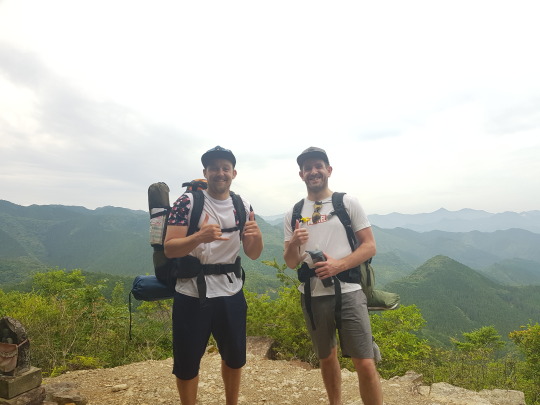
If you are planning to hike the Kumano Kodo Pilgrimage, you’re in for some fantastic historical sights, stunning views, and close-up encounters with various wildlife.
I had the fortune to join a friend for the full 72km Nakahechi Route from Takajiri-oji right through to Kumano Nachi Taisha just as the Pandemic lockdowns were lifting across Japan in June 2020.
At this time there were very few people to encounter on the trail or at the shrines and towns. The recent lockdown also meant a lot of usual stops for shopping and accommodation had limited options due to the tourism industry being so severely affected.
The 1000-year-old path is not without its challenges, so a little bit of preparation goes a long way;
When to travel
Most years, spring and Autumn are the preferred times to travel the route to avoid the heat. We chose to begin the pilgrimage on the first day of June 2020 - the day that the government officially lifted the lockdown in Japan. June is early Summer in Japan and temperatures start creeping into the 30-degree region. June is also the beginning of the rainy season (known locally as Tsuyu meaning “Plum Rain”), and the combination of hot weather and heavy rain makes it a less popular period for attempting the Kumano Kodo. Fortunately, we enjoyed a week of perfect weather with just a single overcast day.
Fitness
For reference, my hiking partner and I are both in our mid 30’s and of average fitness. Our winter seasons are spent working desk jobs and enjoying too much beer in ski towns, so summer is a period where we try to shed some of the bad habits and get more active. Neither of us had ever experienced anything longer than an overnight hike before this. Nevertheless, I would describe the Kumano Kodo as being a very beginner-friendly multi-day hike experience. There are so many populated areas along the way that it’s quite unlikely you will succumb to the elements and have your bones picked clean by the local fauna.

Packing Guide for four nights/five days
We both carried 60L hiking packs as we were also carrying camping equipment such as tents, sleeping bags, sleeping roll, cooking equipment etc. These added up to 15kg of weight with water included which made some of the steep passes quite a challenge in our poorly conditioned state.
For other beginners who would like to do the Nakahechi Route for themselves, below is an outline of what we packed and where we purchased our items locally. Note that the below is not necessarily the best advice; it is merely what two inexperienced and budget-savvy guys chose.
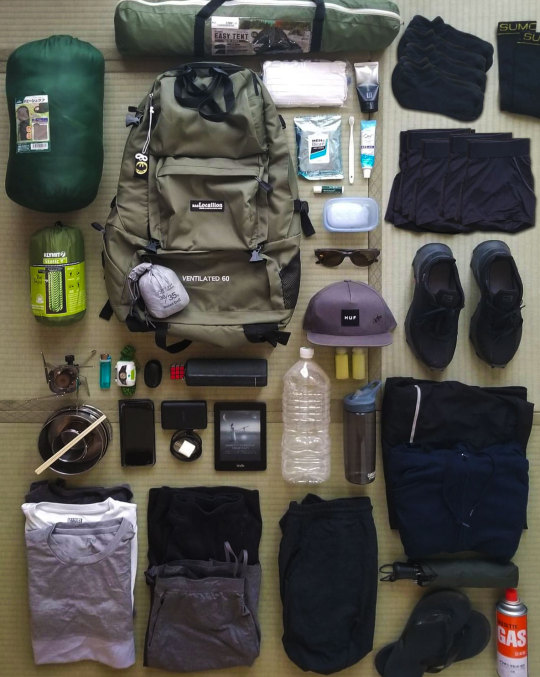
10-15kg camping setup (per person)
We purchased most of our camping gear from either Hard Off or Second Street. They both stock second hand and budget retail gear and are chain stores available in most large towns throughout Japan.
60L Backpack - 5,500 yen from Hard Off
I went for a large backpack because we were packing camping gear. Most people stay at guest houses each evening and only need a day pack for water, snacks, etc.
One person tent - 1,370 yen from 2nd Street
This tent was reeeeeeaallly cheap. I’m glad it didn’t rain.
Sleeping Bag - 1,500 yen from 2nd Street
Cheapest of the cheap sleeping bags. Not good for cold weather. Great for keeping the boogeyman away from your toes.
Sleeping Roll - 9,000 yen from Alpen Outdoor
I splashed out because I wanted a sleeping roll which packs down really small. Also hoped extra cost meant extra comfort, but it was still quite terrible to wake upon in the middle of the night.
Rain Cover for Backpack - 1,000 yen from Hard Off
Just in case it rained. A cheaper option is to put a bin liner in your Backpack.
Gas Stove & Gas & Lighter - 5,000 yen from Alpen Outdoor
Simple but effective. A little bulky compared to models in the 10,000 yen range and it uses larger gas canisters but got plenty of cooks and cups of coffee out of it.
Pots & Cup - 900 yen from 2nd Street
These were incredibly cheap, and we instantly burned the hell out of everything we tried to cook. Great for boiling water. Will carbonise anything else. A decent Teflon camping pot set will be on my Xmas list.
Umbrella - 1,000 yen from Uniqlo
A simple alternative for keeping dry if you don’t want to purchase waterproof pants and jacket, which tend to get pricey when they are both waterproof and breathable.
Clothing
We stopped at Uniqlo for super cheap, light clothing. Nothing special, no fancy brands or special weaves. It was all comfortable for our needs.
3 x Tee shirts - 1,000 yen each from Uniqlo
2 x shorts - 1,000 yen each from Uniqlo
1 x Gym pants - 1,500 yen from Uniqlo
Great for changing into after washing up each day and keeping bugs away from the ankles.
1 x light hoodie - 2,000 yen from Uniqlo
1 x light windbreaker - a Nike running Jacket I already owned
I never used this, but it packed down tiny so no problem.
5 x socks - 2,000 yen total from Uniqlo
These were cheap, cotton, ankle socks. I know cotton is basically the devil; however, I applied antiperspirant cream to my feet each morning to prevent my shoes from turning into the Bog of Eternal Stench and had no problems.
5 x undies
Personal preference. We ended up swimming on a couple of afternoons, so I found it easier to just rock life “commando” for a day or two rather than suffer wearing or carrying damp undies for hours.
1 x Shoes - Salomon AlphaCross 8,000 yen from Amazon
Hiking boots may be a better option due to the unstable terrain - my hiking companion almost rolled his ankle into the next century a couple of times. That said, these trail runners were comfortable and dry, and the traction was excellent everywhere except for the sections with wet, mossy rocks. Might as well have been wearing banana peels on my feet during those parts of the path.
1 x Jandals - already owned
For letting the piggy wiggies breath after a long day in the shoes.
1 x set of thermals - already owned
Totally unnecessary in June. Don’t be like me.
Sun hat and Sunnies - already owned
For looking cool at the club. A wide brim hat would be a better choice for the trail.
Food and water
You should encounter drink vending machines and food shops at least once each day, so it’s not necessary to go overboard with supplies - especially if you’ve booked accommodations which provide dinner, breakfast, or a packed lunch.
As we specifically planned to camp on a couple of evenings, and we had a brand new gas stove to try out, we brought extra food to cook up so we could feel like self-sufficient mountain men.
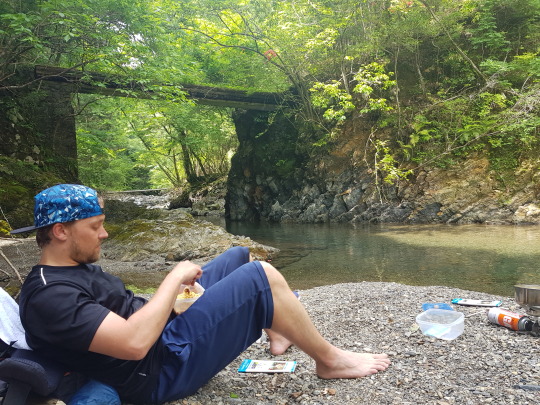
We packed:
Rice which we mixed with grains and seasoning and refrigerated for rice balls on the trail. Warning: google how to prepare rice for eating later, so you don’t DIE.
Instant ramen and canned tuna, which we cooked up for dinner both nights that we camped.
Eggs and spam which we cooked and promptly burned for breakfast the morning after our first camp
Bananas, trail mix, CalorieMates, and Protein Jelly drinks as snacks
Instant Coffee and Teabags
Around 2-3 litres of water
Special mentions
Wipes in case of emergency poopage
Bluetooth speaker for fighting off the Daru Spirits during the steep sections (special mention to Prodigy’s Fat of the Land album for getting us to the top of Echizen Toge Pass on day four).
We forgot Insect Repellant and received some gnarly bites on the legs
Itinerary
(5 days, approx 80km / 4160m total elevation gain)
Our Itinerary was modified mid-travel because the Info Desk in Hongu advised that all accommodations and shops were likely closed at Koguchi. This village is where people typically rest overnight before tackling the demanding Echizen Toge Pass on the Ogumotori-goe section which is the most gruelling climb of the Nakahechi Route. As such, we incorporated the climb into the end of our 4th day rather than the beginning of our 5th.
Day One
Takajiri-oji Trailhead > Chikatsuyu-oji - approx 13.5km
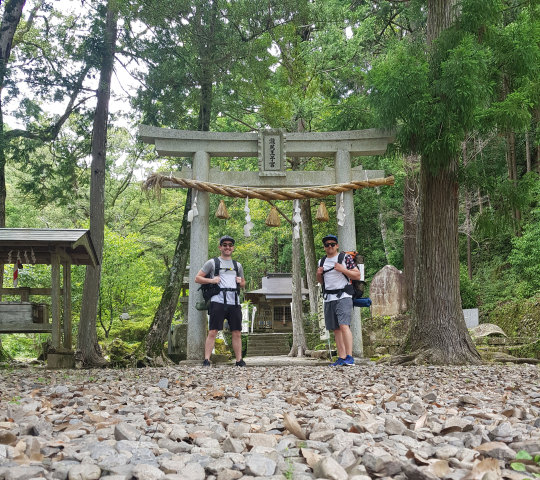
After being dropped off at the Trailhead by bus, we nosed about and took a few photos at the entrance before starting the ascent. It didn’t take a great deal of time to start building a sweat as the steps slowly took us up to the 400m mark, and I could feel a bit of self doubt (henceforth known as Daru Spirits) setting in as my lack of fitness made itself clear. Fortunately, there were a couple of interesting shrines on the way up which offered a chance to take off the packs and have a few sips of water.
Only a short while into this first climb we encountered our first slithery friend as we startled a nearby snake beside the track who in turn startled a few of my hairs into turning grey.
Once on the ridge line the pace was quite easy right through until Takahara 4km further. Here we enjoyed idyllic scenes of stepped rice paddies dropping down into the valley while a nearby water wheel lazily turned under a weak stream.
Another relatively tough climb directly out of Takahara - mostly due to the heat - and we were back under the forest canopy.

In between enjoying the shrines and the forest views along the trail there were also plenty of interesting creatures spotted including more slitheries, and some red crabs which were definitely completely lost.
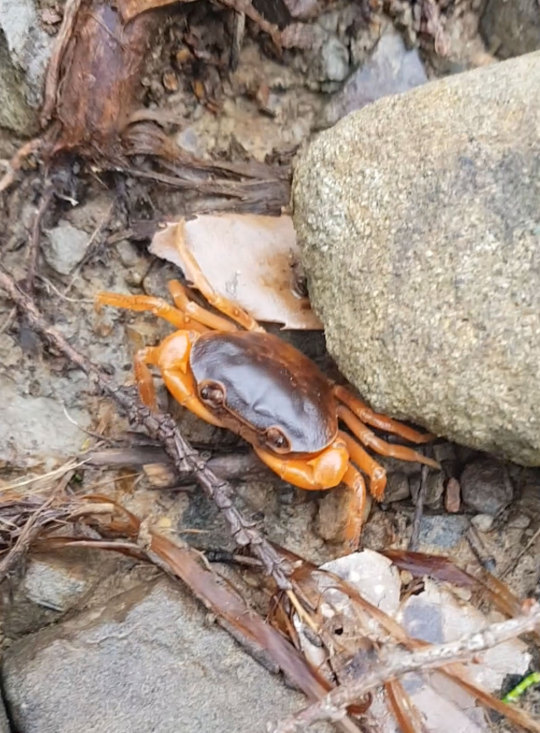
We camped at the Iris Park Campground which added a couple of extra km of walking as it is located over the hill from the main village. It was a great spot next to a river with plenty of amenities including cabins, sento bath facilities, power outlets, covered bbq areas, and - inexplicably - some sort of menagerie.
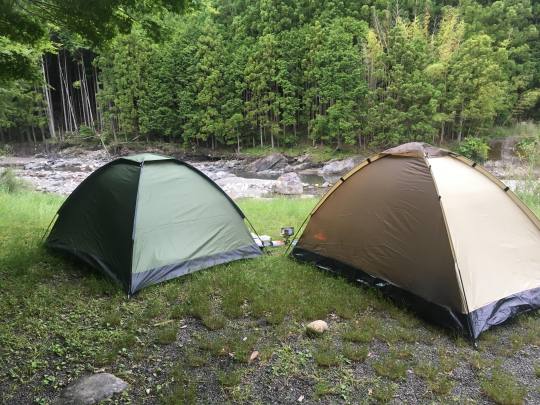
Day Two
Chikatsuyu-oji > Hongu - approx 25km

After a surprisingly shit sleep in our $15 tents, we cooked up some spam and eggs for breakfast to fuel the finely tuned machines that are our bodies then hit the trail again.
Today was to be a big 25km trek to Hongu where the first major shrine “Kumano Hongu Taisha” is located, and it was another hot one pushing 30 degrees with 85% humidity.
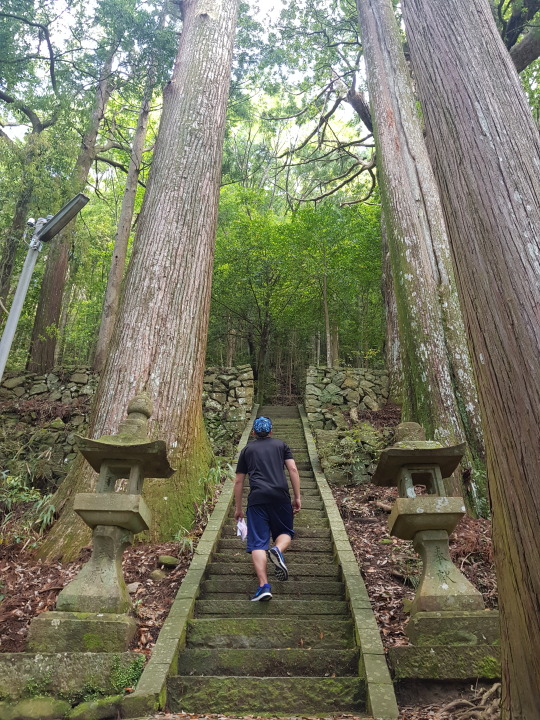
An hour or two out of Chikatsuyu there was an impressive shrine with stunning Cedar trees lining the stairway and a rest stop displaying a traditional grass “raincoat”.
TIP: Don’t try this thing on with short sleeves or you’ll rash up like a baby’s ass in summer.
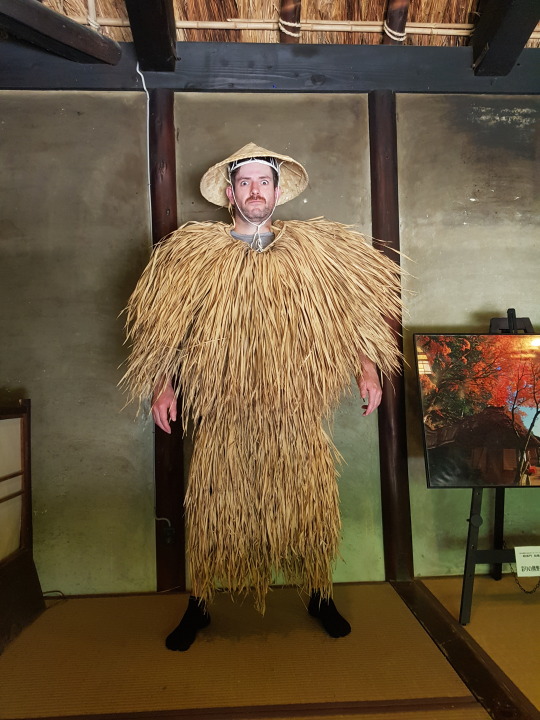
The trail followed the road for some time making it an easy journey - except for the moment we didn’t notice a recently-squished snake on the road until we almost trod on it and squealed in sheer terror.
The easy times were short lived though, as we entered the Detour Pass and started climbing, Daru Spirits started flying at us from every angle; between the steep staircases and sections exposed to the blazing sun, the Daru almost got the better of us. Fortunately, after a hard fought battle we reached the peak and promptly collapsed in the shade knowing that the worst was behind us for now.
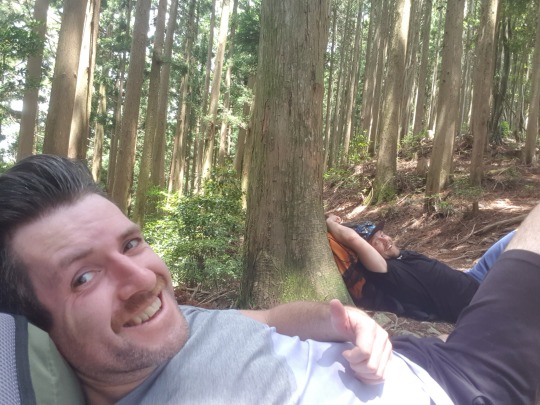
Our feet were definitely feeling tender after this lengthy hike which involved clearing three passes in total, each with steep elevation. After the Detour Pass near Jagata-jizo, there was an excellent spot to relax on the stoney shore of a small stream, have a bite and cool the feet off in the chilly water.
As we were descending the final pass of the day, we had set a brisk pace through the trees and I accidentally stepped on a snake which was having a nap on the path. Needless to say it was none too happy about having its slumber rudely interrupted and it made a bee-line for my companion close behind who gave a yell and looked about ready to throw himself off the path to avoid the slithery vengeance. We proceeded a little more cautiously afterwards, but between all the sticks that look a lot like snakes, and all the snakes that look a lot like sticks it was a jumpy last few kilometers.
Once we arrived in Hongu we picked up a celebratory beer - had a kanpai to celebrate surviving our snake encounter - and booked a dorm at the Kumano Backpackers. The owner offered excellent local advice about where to find river swimming spots, camping, and refilling drink bottles on the road ahead.
Day Three
Rest Day - approx 7km

We stayed a second night at Kumano Backpackers and used our free time to properly explore the Kumano Hongu Taisha Shrine, the impressive Otorii, and we also caught the bus to check out the nearby Yunomine Onsen town.
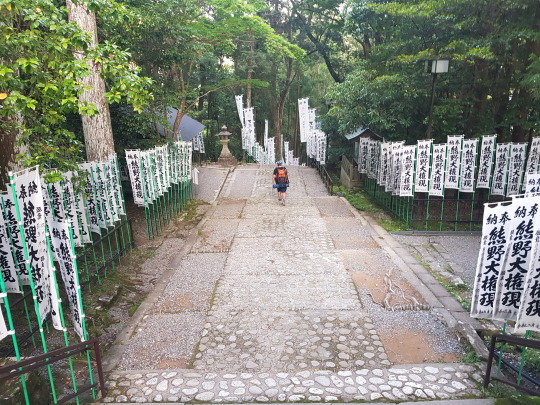


We learned on this day that our intended destination of Koguchi for the following evening was likely closed - which meant we may not be able to top up on clean water, fresh food, or book accommodation. This meant we were looking at a much bigger day of walking and would need to clear the Echizen-toge pass the same day to reach the next stop - Jizo-jaya Teahouse - which hopefully had operational vending machines for fresh drinks and a good camping spot.
We spent the evening preparing our rice for additional trail snacks, purchased an extra 2L water and looked forward to carrying the heaviest load of the whole trip up the largest mountain.
Day Four
Ukegawa Trailhead > Jizo-Jaya Teahouse Remains - approx 19km
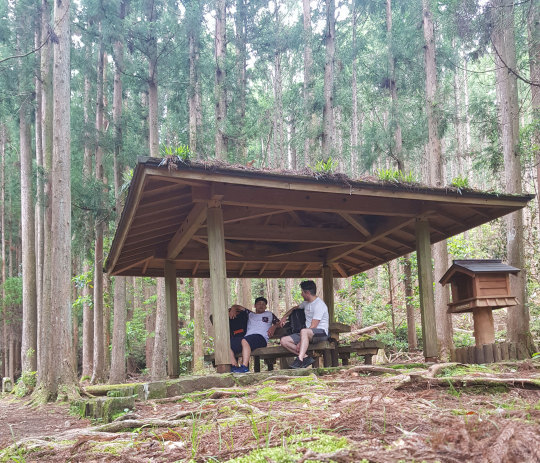
Well rested, we caught an early bus to the Ukegawa trailhead, which saved us an hour or so of walking along the highway. From here it was an easy 12.5km to Koguchi where we stopped for a lunch break.
Upon arriving, it turned out the local shop was, in fact, open and the incredibly kind lady working there gave us a hearty Ganbatte! after topping up our water bottles with fresh, icey water and offering a snack for the road ahead.
Under the Koguchi bridge was a spectacular swimming hole with a plethora of fingerlings ready to nibble on any weary feet dipped into the water. We stopped here for two hours to enjoy a refreshing swim and a brief nap before downing a CalorieMate, Banana, Rice Ball, and an Energy Jelly (for good measure).
Soon enough, it was time to saddle up again and tackle the 800m Echizen Toge Pass.
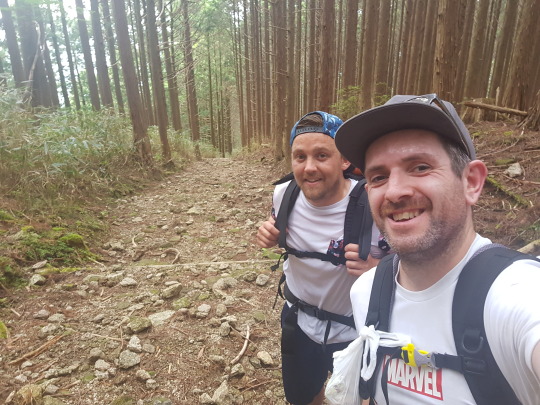
This was a long hike up, and many times we saw the sky appear in the trees ahead and felt we must be near the top, only for the track to turn once again and present us with another indeterminable number of stairs. We found ourselves making steady progress by focussing on counting down the official markers every 500m, and picking an easy line up the stairs which avoided making large strides. Since the steps were often haphazardly sized stones it was a good mental distraction to pick a path a few meters ahead as you climbed to avoid strenuous steps.
As we neared the top, we took a water break, connected the bluetooth speaker and queued up The Prodigy to get us pumped for the final few hundred meters.
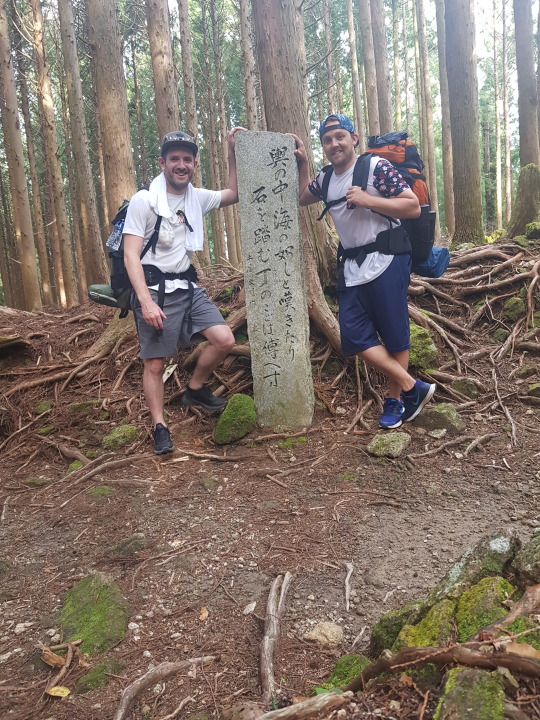
And then we were there - and we felt great! A quick water break, a photo-op, and then down the other side of the pass.
That evening we camped at Jizo-Jaya Teahouse - a fantastic rest stop with power and an indoor seating area for travellers. The shelter was located a short 1600m walk after completing the Pass.
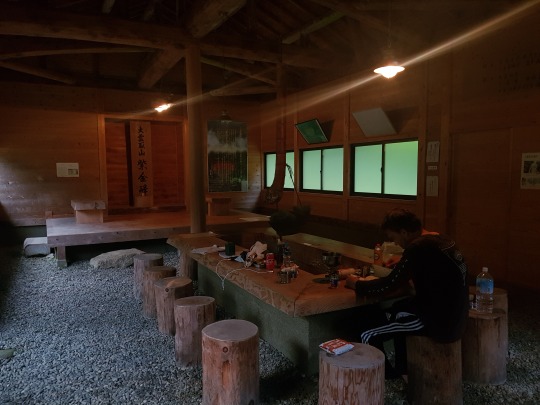
As well as offering more drink vending machines, the rest house area had a tranquil stream perfect for washing off the day’s sweat and grime.
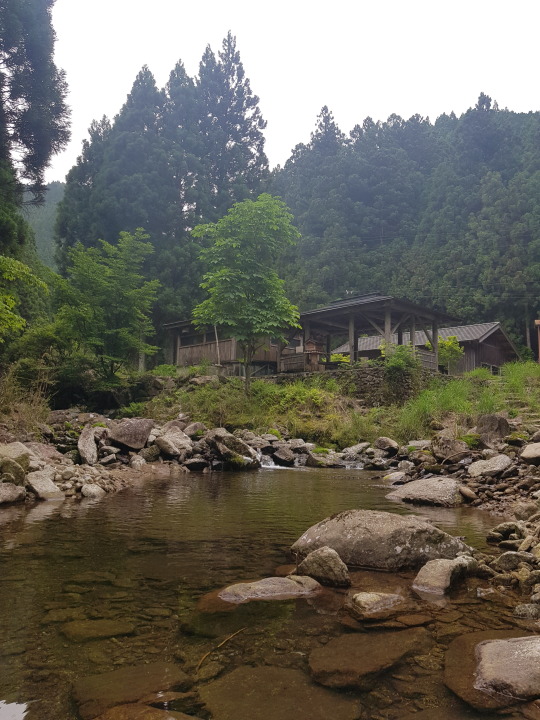
Day Five
Jizo-Jaya Teahouse Remains > Kumano Nachi Taisha Shrine - approx 8km
We made an early start to complete the final unchallenging 8km of the Nakahechi Route. The descent into the valley where the second Major Shrine is located offers a rewarding view.
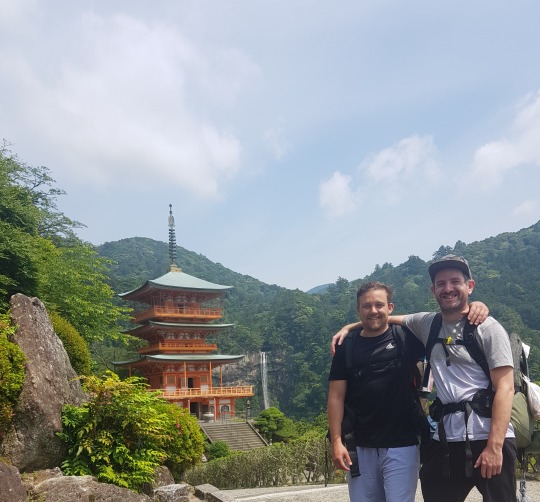
After exploring the temple grounds for an hour or two and collecting some souvenir junk, we descended the Daimon Zaka and caught the bus to Nachi Station, then a short train ride to Shingu to visit the third shrine - Kumano Hayatama Taisha.
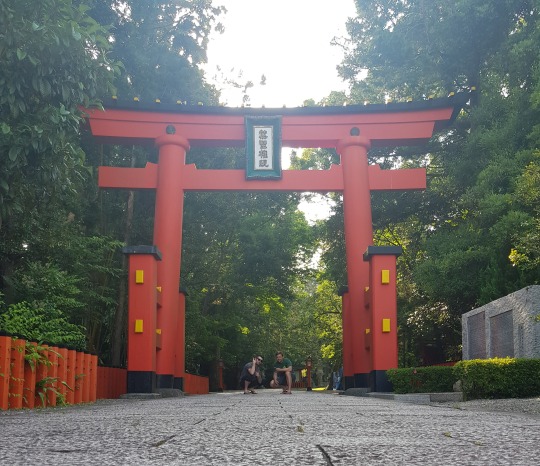
At Shingu we booked a traditional style hotel room, took off the packs for good and called it a week.

Final Thoughts
Bring a copy of the official Kumano Travel guide with you, The information inside is amazing.
Be sure to stop and read the information signs at the various points of interest during the pilgrimage. No photos of the Jizo and Oji shrines are included in this post because I felt they were best enjoyed in person as a rewarding place to rest during the journey.
Sleeping in a tent on a thin matt is pretty uncomfortable - book a guesthouse well in advance if you want the traditional experience.
Bring a notebook so you can stamp the pages at each shrine along the way.
Every toilet I encountered along the way was in great condition and extremely clean. If you can hold it in until you reach proper facilities you’ll thank yourself.
Stay hydrated and don’t push yourself too hard on the steep sections.
Don’t rush on the downhill side - it’s easy to injure yourself on the uneven paths.
Phone service can be limited especially in the last couple of valleys.
Beware of the Daru!
0 notes
Photo

As always, the Sumida River Fireworks delivered! Check out some of the best captions taken in this edition of 2019!
Bright & colorful fireworks illuminating the sky, bringing everlasting memories of Japanese summer to all the people attending! Just pure bliss!
#festival#fireworks#sumida#matsuri#japansummer#sumidariver#sumidariverfireworks#japanese#japan#nihon#nippon#traveljapan#japanpics#tokyofireworks#tokyo#matsurijapan#akaiji
0 notes
Photo

Tokyo, in itself, is an exciting place to be. But personally, I also like exploring its many streets. They often yield charming (at least for me) shops like these! There’s always something new to discover. いきましょう! || #2018 #japan #tokyo #japantravels #tokyotravels #tokyosummer #japansummer #pastry #pastryshop #sweets #pastries #japanesepastries #penguinpastry #sweettooth (at Tokyo, Japan) https://www.instagram.com/p/BxylcotgT0f/?igshid=1t8qpg6qwsit7
#2018#japan#tokyo#japantravels#tokyotravels#tokyosummer#japansummer#pastry#pastryshop#sweets#pastries#japanesepastries#penguinpastry#sweettooth
0 notes